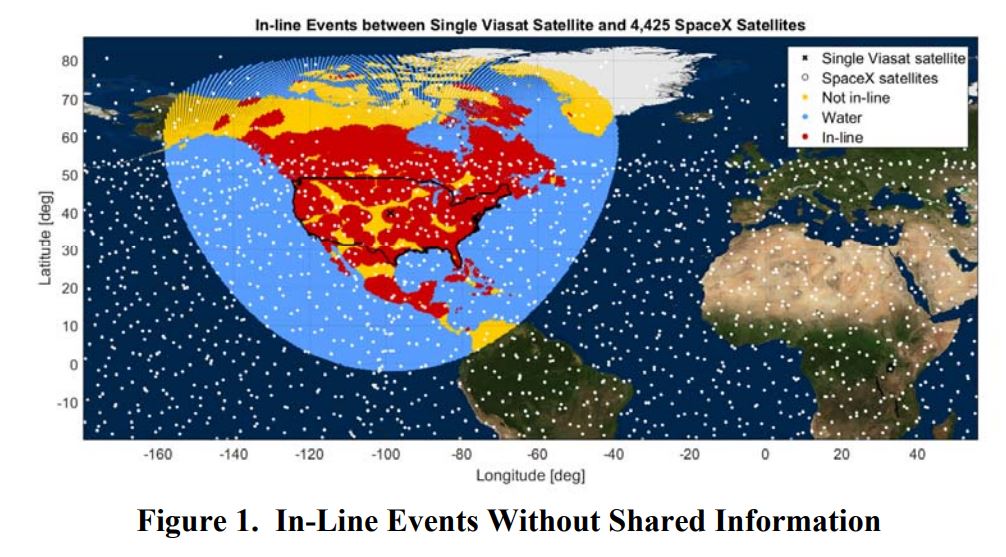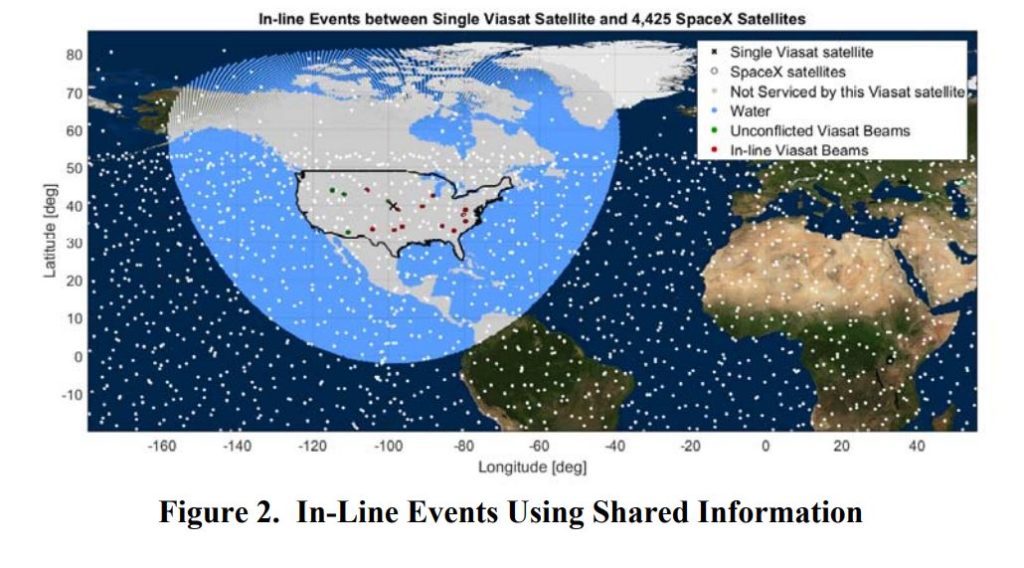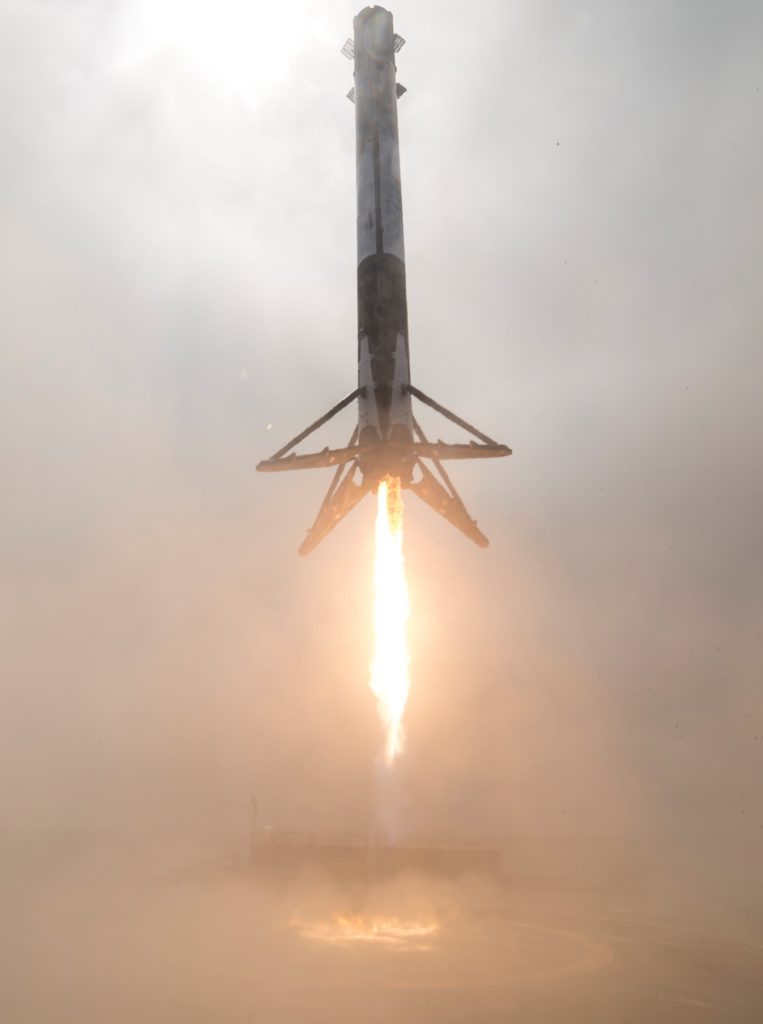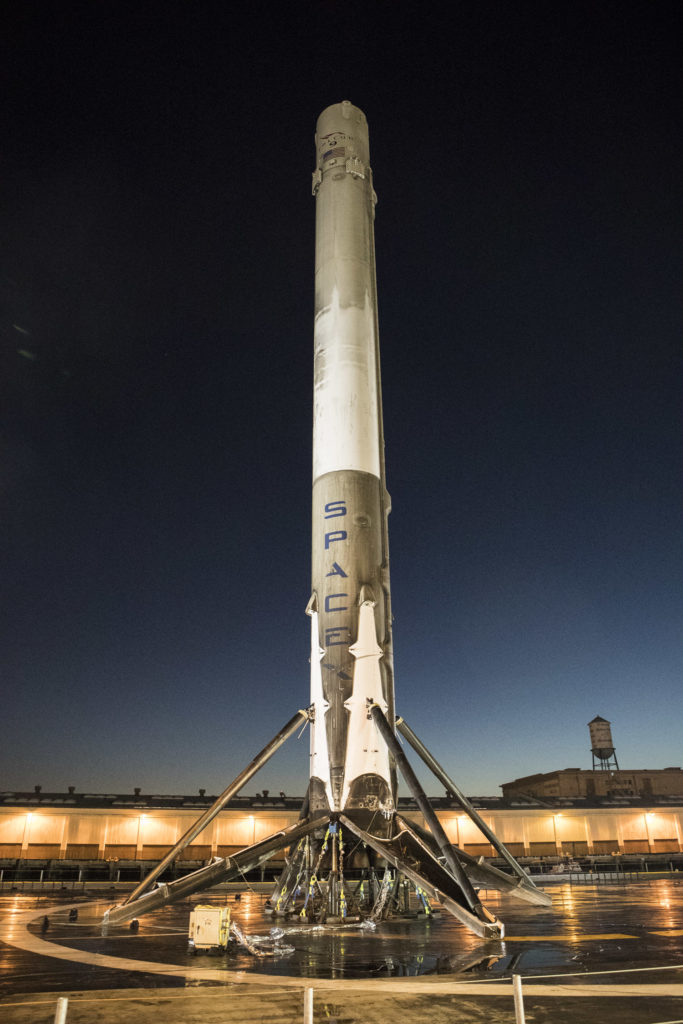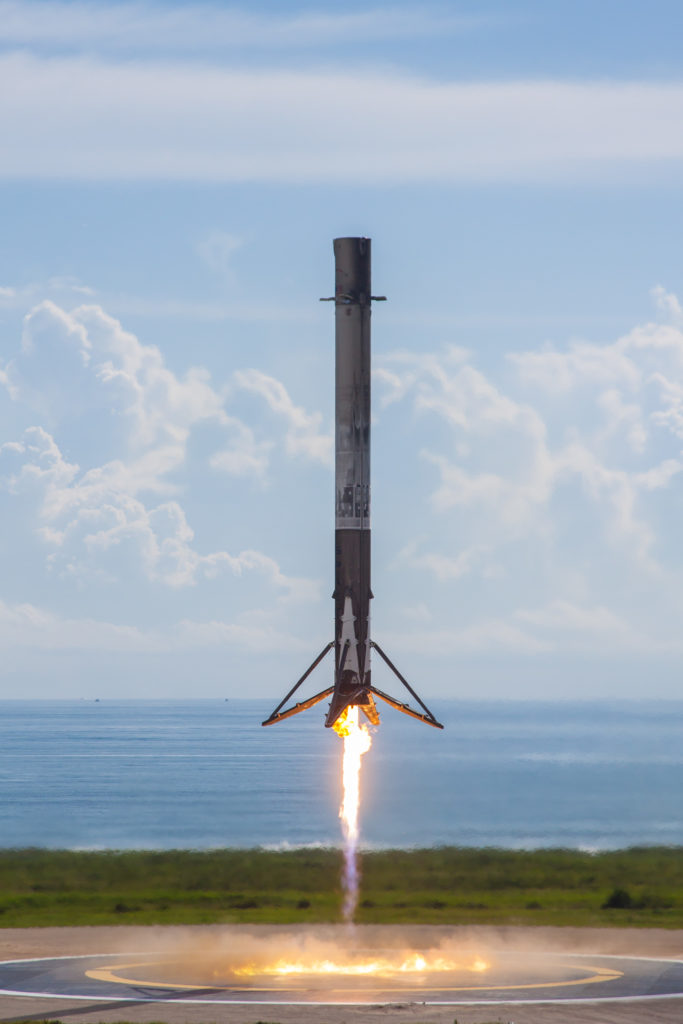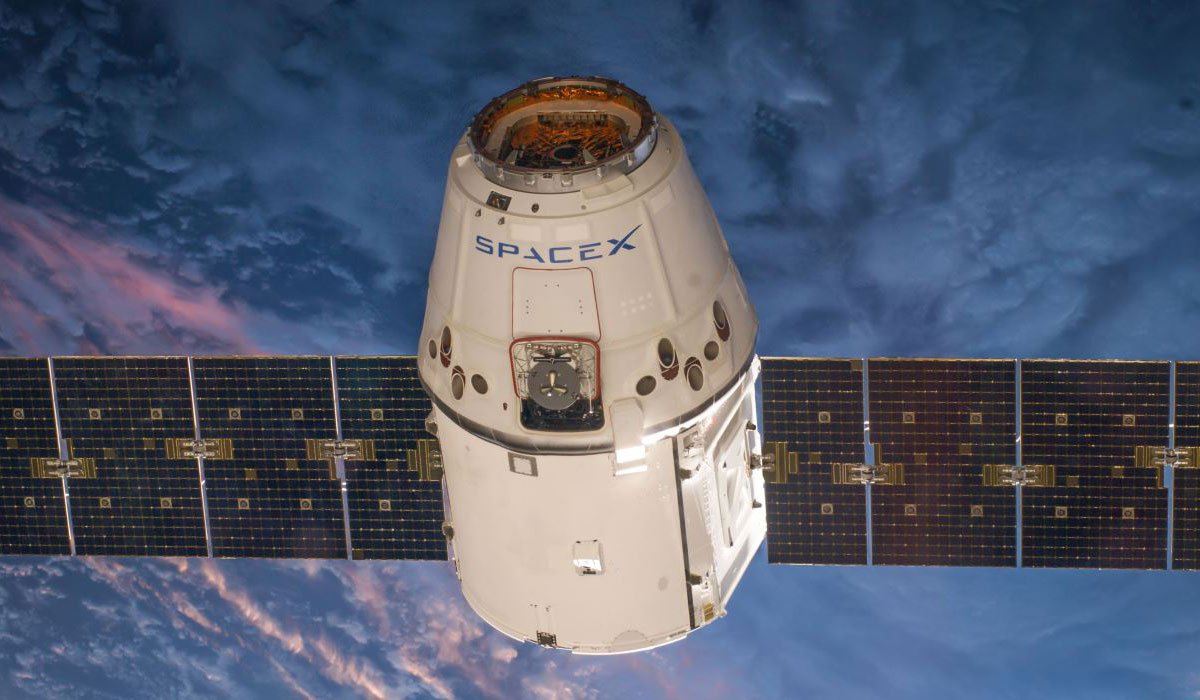
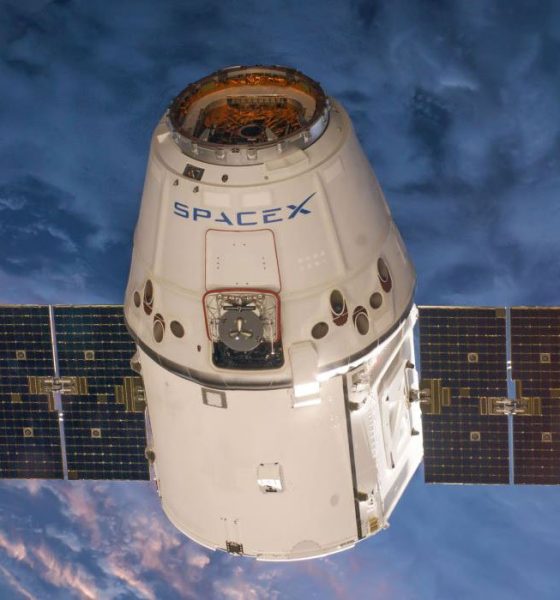
News
SpaceX’s internet satellite strategy faces possible setback (Correction: It’s actually in great shape)
Correction: Upon further analysis of FCC filings and proposed updates to ITU regulations, SpaceX’s Internet constellation is on much steadier ground than it initially appeared to be, and the FCC decision made on September 26 2017 to update its NGSO FSS regulations is likely to help SpaceX far more than it might harm the company.
The ITU has since 2015 taken a stance that aligns more with the FCC’s cooperative spectrum sharing policy and did not intend for Part 5 of its Radio Regulations to be interpreted as a “first come, first serve” attitude. Specifically, the ITU’s 2017 Rules of Procedure pointedly state in Article 9.6 (Word document download) that those rules were not intended “to state an order of priorities for rights to a particular orbital position” and that “the [interference] coordination process is a two way process”. An ex parte filed with the FCC (PDF download) by SpaceX on September 15 stated SpaceX’s support for these international and domestic policy adoptions, as well as the FCC International Bureau’s responsive consideration of SpaceX’s own suggestions.
The company’s first two test satellites could still launch later this year
The U.S. Federal Communications Commission (FCC) responded September 7th to requests for modification to existing satellite communications regulations and FCC practices from a number of prospective constellation operators, including OneWeb, Telesat, and SpaceX.
The FCC ultimately decided to avoid one major rule change that could force SpaceX to completely reconsider its strategic approach to its proposed Low Earth Orbit broadband constellation.
To grossly oversimplify, SpaceX had requested that the FCC apply their non-interference rules for lower orbit communications satellites to internet constellations operating both inside and outside the physical United States. These rules require that communication satellites operating in non-geostationary orbits (NGSO) share the available wireless spectrum equally among themselves when two or more satellites pass within a certain distance of each other relative to ground stations. In simpler terms, consider your smartphone’s cellular connectivity. The FCC’s rule for satellites in lower orbits can be thought of like multiple smartphones using the same cell tower to access the internet: the cell tower simply acknowledges the multiple devices it needs to serve and allows each device a certain amount of bandwidth.
However, the FCC is admittedly a domestic Commission focused on administering communications rules and regulations in the United States, and an agency already exists for coordinating global communications needs, called the International Telecommunication Union (ITU). The ITU’s Radio Regulations are considerably more simplistic. Rather than the FCC’s more nuanced and reasonable methods of spectrum sharing, the ITU allows the first satellite operator actively using a certain orbit or spectrum to become the primary coordinator for all interference issues. Put more simply, it gives those who launch communications satellites first a “first come, first serve” advantage that lets those entities then set the rules for interference with their constellation.
- In these figures, SpaceX attempts to demonstrate the significance of cooperation between different satellite constellation operators. (SpaceX/FCC)
- Compared to the first figure, interference events while sharing data on satellite locations is almost nonexistent. (SpaceX/FCC)
Both OneWeb and Telesat, companies also interested in launching global broadband constellations, are licensed in countries other than the United States, meaning that the FCC has given the ITU precedent in deciding how to deal with SpaceX’s potential constellation interference. SpaceX’s proposed constellation of at least several thousand satellites ends up being at a distinct disadvantage simply because it would take far longer for SpaceX to even partially complete its constellation when compared with competitors like OneWeb, who expect to finish launching the first phase of their constellation several hundred satellites by the end of 2020. Under the ITU’s regulations, SpaceX could be forced by competitors to effectively step on eggshells around their constellations by avoiding interference to the furthest extent possible, rather than simply sharing spectrum in the brief periods where different satellites temporarily interfere with each other.
While the FCC’s choice to cede international interference coordination to the ITU is a huge blow to SpaceX’s proposed internet constellation efforts, the same September 7th report also eased a handful of other requirements that would have proven difficult for SpaceX’s massive constellation. For geostationary constellations, the FCC previously required that all satellites be launched within a period of six years, with failure to do so resulting in a revoked license for the company in question. In a small concession to SES, O3b, and SpaceX, the FCC now plans to require that 50% of lower orbit satellite constellations be launched within six years of receiving an FCC license. This would still be a massive challenge for SpaceX’s plan of 4,425 initial satellites and a follow-up constellation of more than 7,000 additional satellites (PDF download).
- Falcon 9 lands on drone ship JRTI after launching Formosat-5, August 2017. (SpaceX)
- 2017 saw SpaceX recovery 10 Falcon 9 first stages, 5 by sea. (SpaceX)
- Falcon 9 B1040 returns to LZ-1 after the launch of the USAF’s X-37B spaceplane. (SpaceX)
The FCC’s September 7th report will not become final unless it is passed by vote in a September 26th Open Commission Meeting. It is possible that SpaceX council will make a statement protesting the FCC’s decision, but it is nevertheless likely that the FCC’s report will be accepted and become official. While the LEO internet constellation has remained a low priority for SpaceX since it was revealed in 2015, the company has steadily continued work on the project and SpaceX has every reason to continue pursuing it given the potential profit margins it could produce. In spite of the now expanded difficulties lying ahead, SpaceX appears to be preparing for the first launch of two test satellites related to its internet constellation efforts. The move is seen as a likely attempt to tag along as passengers during SpaceX’s launch of PAZ, a Spanish earth imaging satellite, during the final three months of 2017.
Elon Musk is scheduled to reveal more details on SpaceX’s Mars exploration and colonization efforts on September 29th. He has stated that this presentation will focus more on the “how” of colonizing Mars, revealing how exactly SpaceX thinks it can fund the development of its Interplanetary Transport System. Musk also confirmed several weeks ago that SpaceX had reduced the size of the ITS rocket to a still-massive diameter of 9 meters, and sources inside the company have also indicated that the company is thinking about modifying its LC-39A Florida launch pad to support both Falcon and ITS vehicles. SpaceX recruiters revealed earlier this week that SpaceX also intends to have their Boca Chica, Texas launch pad, which is currently under construction, be capable of eventually launching ITS-sized vehicles once it comes online in 2019 or later.

Cybertruck
Tesla updates Cybertruck owners on timeline of massive feature yet to ship

Tesla is updating Cybertruck owners on its timeline of a massive feature that has yet to ship: Powershare with Powerwall.
Powershare is a bidirectional charging feature exclusive to Cybertruck, which allows the vehicle’s battery to act as a portable power source for homes, appliances, tools, other EVs, and more. It was announced in late 2023 as part of Tesla’s push into vehicle-to-everything energy sharing, and acting as a giant portable charger is the main advantage, as it can provide backup power during outages.
Cybertruck’s Powershare system supports both vehicle-to-load (V2L) and vehicle-to-home (V2H), making it flexible and well-rounded for a variety of applications.
However, even though the feature was promised with Cybertruck, it has yet to be shipped to vehicles. Tesla communicated with owners through email recently regarding Powershare with Powerwall, which essentially has the pickup act as an extended battery.
Powerwall discharge would be prioritized before tapping into the truck’s larger pack.
However, Tesla is still working on getting the feature out to owners, an email said:
“We’re writing to let you know that the Powershare with Powerwall feature is still in development and is now scheduled for release in mid-2026.
This new release date gives us additional time to design and test this feature, ensuring its ability to communicate and optimize energy sharing between your vehicle and many configurations and generations of Powerwall. We are also using this time to develop additional Powershare features that will help us continue to accelerate the world’s transition to sustainable energy.”
Owners have expressed some real disappointment in Tesla’s continuous delays in releasing the feature, as it was expected to be released by late 2024, but now has been pushed back several times to mid-2026, according to the email.
Foundation Series Cybertruck buyers paid extra, expecting the feature to be rolled out with their vehicle upon pickup.
Cybertruck’s Lead Engineer, Wes Morrill, even commented on the holdup:
As a Cybertruck owner who also has Powerwall, I empathize with the disappointed comments.
To their credit, the team has delivered powershare functionality to Cybertruck customers who otherwise have no backup with development of the powershare gateway. As well as those with solar…
— Wes (@wmorrill3) December 12, 2025
He said that “it turned out to be much harder than anticipated to make powershare work seamlessly with existing Powerwalls through existing wall connectors. Two grid-forming devices need to negotiate who will form and who will follow, depending on the state of charge of each, and they need to do this without a network and through multiple generations of hardware, and test and validate this process through rigorous certifications to ensure grid safety.”
It’s nice to see the transparency, but it is justified for some Cybertruck owners to feel like they’ve been bait-and-switched.
News
Tesla’s northernmost Supercharger in North America opens

Tesla has opened its northernmost Supercharger in Fairbanks, Alaska, with eight V4 stalls located in one of the most frigid cities in the U.S.
Located just 196 miles from the Arctic Circle, Fairbanks’s average temperature for the week was around -12 degrees Fahrenheit. However, there are plenty of Tesla owners in Alaska who have been waiting for more charging options out in public.
There are only 36 total Supercharger stalls in Alaska, despite being the largest state in the U.S.
Eight Superchargers were added to Fairbanks, which will eventually be a 48-stall station. Tesla announced its activation today:
North America’s northernmost Supercharger Fairbanks, AK (8 stalls) opened to public. https://t.co/M4l04DZ6B5 pic.twitter.com/zyL6bDuA93
— Tesla Charging (@TeslaCharging) December 12, 2025
The base price per kWh is $0.43 at the Fairbanks Supercharger. Thanks to its V4 capabilities, it can charge at speeds up to 325 kW.
Despite being the northernmost Supercharger in North America, it is not even in the Top 5 northernmost Superchargers globally, because Alaska is south of Norway. The northernmost Supercharger is in Honningsvåg, Norway. All of the Top 5 are in the Scandanavian country.
Tesla’s Supercharger expansion in 2025 has been impressive, and although it experienced some early-quarter slowdowns due to V3-to-V4 hardware transitions, it has been the company’s strongest year for deployments.
🚨🚨 Tesla Supercharging had a HUGE year, and they deserve to be recognized.
🍔 Opened Tesla Diner, a drive-in movie theater with awesome, Chef-curated cuisine
🔌 Gave access to Superchargers to several EV makers, including Hyundai, Genesis, Mercedes-Benz, Kia, Lucid, Toyota,… pic.twitter.com/yYT2QEbqoW
— TESLARATI (@Teslarati) December 10, 2025
Through the three quarters of 2025, the company has added 7,753 stations and 73,817 stalls across the world, a 16 percent increase in stations and an 18 percent increase in stalls compared to last year.
Tesla is on track to add over 12,000 stalls for the full year, achieving an average of one new stall every hour, an impressive statistic.
Recently, the company wrapped up construction at its Supercharger Oasis in Lost Hills, California, a 168-stall Supercharger that Tesla Solar Panels completely power. It is the largest Supercharger in the world.
News
Tesla shocks with latest Robotaxi testing move
Why Tesla has chosen to use a couple of Model S units must have a reason; the company is calculated in its engineering and data collection efforts, so this is definitely more than “we just felt like giving our drivers a change of scenery.”

Tesla Model S vehicles were spotted performing validation testing with LiDAR rigs in California today, a pretty big switch-up compared to what we are used to seeing on the roads.
Tesla utilizes the Model Y crossover for its Robotaxi fleet. It is adequately sized, the most popular vehicle in its lineup, and is suitable for a wide variety of applications. It provides enough luxury for a single rider, but enough room for several passengers, if needed.
However, the testing has seemingly expanded to one of Tesla’s premium flagship offerings, as the Model S was spotted with the validation equipment that is seen entirely with Model Y vehicles. We have written several articles on Robotaxi testing mules being spotted across the United States, but this is a first:
🚨 Tesla is using Model S vehicles fitted with LiDAR rigs to validate FSD and Robotaxi, differing from the Model Ys that it uses typically
Those Model Y vehicles have been on the East Coast for some time. These Model S cars were spotted in California https://t.co/CN9Bw5Wma8 pic.twitter.com/UE55hx5mdd
— TESLARATI (@Teslarati) December 11, 2025
Why Tesla has chosen to use a couple of Model S units must have a reason; the company is calculated in its engineering and data collection efforts, so this is definitely more than “we just felt like giving our drivers a change of scenery.”
It seems to hint that Tesla could add a premium, more luxury offering to its Robotaxi platform eventually. Think about it: Uber has Uber Black, Lyft has Lyft Black. These vehicles and services are associated with a more premium cost as they combine luxury models with more catered transportation options.
Tesla could be testing the waters here, and it could be thinking of adding the Model S to its fleet of ride-hailing vehicles.
Reluctant to remove the Model S from its production plans completely despite its low volume contributions to the overall mission of transitioning the world to sustainable energy, the flagship sedan has always meant something. CEO Elon Musk referred to it, along with its sibling Model X, as continuing on production lines due to “sentimental reasons.”
However, its purpose might have been expanded to justify keeping it around, and why not? It is a cozy, premium offering, and it would be great for those who want a little more luxury and are willing to pay a few extra dollars.
Of course, none of this is even close to confirmed. However, it is reasonable to speculate that the Model S could be a potential addition to the Robotaxi fleet. It’s capable of all the same things the Model Y is, but with more luxuriousness, and it could be the perfect addition to the futuristic fleet.
